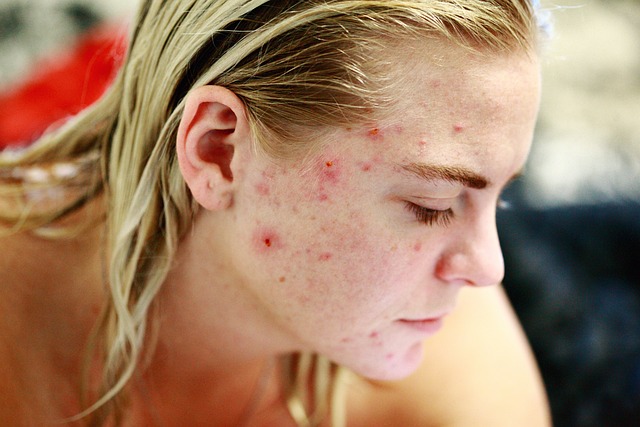Discover How to Cure Acne: The Role of a Balanced Skin Microbiome
Discover How to Cure Acne: The Role of a Balanced Skin Microbiome
Acne is more than just a pesky skin condition; it can be a source of frustration and low self-esteem for millions worldwide. While topical treatments and medications offer temporary relief, they often fail to address the root cause of acne. This is where understanding the skin microbiome can make a significant difference. By nurturing a balanced skin microbiome, you can potentially cure acne from within. In this comprehensive guide, we will delve into how a balanced skin microbiome plays a crucial role in acne management.
Understanding the Skin Microbiome
The skin microbiome refers to the diverse community of microorganisms that live on our skin. This ecosystem includes bacteria, fungi, and viruses that coexist with human cells. Studies suggest that a healthy skin microbiome is essential for maintaining skin health, protecting against infections, and even preventing certain skin conditions like acne.
What is the Skin Microbiome?
The skin is the largest organ of the human body and serves as a barrier against external threats. The skin microbiome acts as a protective layer, interacting with our immune system and helping maintain the skin’s pH balance. Research indicates that the skin microbiome contains over 1 trillion microorganisms, with more than 1,000 different species.
The Connection Between Acne and the Skin Microbiome
Acne arises when hair follicles become clogged with oil and dead skin cells, leading to inflammation and bacterial growth. The specific bacteria, Cutibacterium acnes (formerly known as Propionibacterium acnes), plays a significant role in acne development. However, recent studies have shown that an imbalanced skin microbiome can exacerbate this condition.
How an Imbalanced Microbiome Contributes to Acne
An imbalance in the skin microbiome, known as dysbiosis, can result in an overgrowth of harmful bacteria and a reduction in beneficial bacteria. This imbalance can lead to increased inflammation, disrupted skin barrier function, and more severe acne outbreaks. According to a study published in the Journal of Investigative Dermatology, individuals with acne had a distinct microbial profile compared to those with clear skin.
Steps to Balance Your Skin Microbiome and Cure Acne
Balancing your skin microbiome involves a combination of lifestyle changes, skincare practices, and dietary adjustments. Here are some actionable steps to help you achieve a balanced skin microbiome and potentially cure acne:
1. Incorporate Probiotics into Your Skincare Routine
Probiotics are beneficial bacteria that can help restore balance to your skin microbiome. Look for skincare products containing probiotics or bacterial lysates that can promote a healthy microbial environment on your skin. Studies have shown that topical probiotics can enhance skin barrier function and reduce inflammation.
2. Adopt a Balanced Diet Rich in Prebiotics
Prebiotics are non-digestible fibers that fuel the growth of beneficial bacteria in the gut, which in turn can impact the skin microbiome positively. Incorporate foods like garlic, onions, bananas, and whole grains into your diet. A study in the Journal of Dermatological Science found that a diet rich in prebiotics and probiotics can improve skin health and reduce acne severity.
3. Avoid Aggressive Skincare Products
Harsh cleansers and exfoliants can strip the skin of its natural oils and disrupt the microbiome. Opt for gentle, pH-balanced cleansers that support your skin’s natural ecosystem. Dermatologists recommend using products that are free from sulfates, parabens, and artificial fragrances to maintain a healthy skin microbiome.
4. Stay Hydrated and Manage Stress
Hydration is key to maintaining skin health and supporting a balanced microbiome. Drink plenty of water throughout the day to keep your skin hydrated. Additionally, stress management techniques such as meditation, yoga, or deep breathing can help regulate the hormones that affect both your gut and skin microbiomes.
Real-Life Success Stories
Many individuals have successfully managed their acne by focusing on their skin microbiome. For instance, Sarah, a 29-year-old from California, suffered from severe cystic acne for years. After incorporating probiotics into her skincare routine and adopting a diet rich in prebiotics, she noticed a significant reduction in her acne within three months.
Conclusion: Prioritize Your Skin Microbiome for Clearer Skin
In conclusion, understanding and nurturing your skin microbiome is a powerful approach to curing acne. By fostering a balanced microbial environment through probiotics, a healthy diet, gentle skincare, and stress management, you can achieve clearer, healthier skin. Remember, patience and consistency are key to seeing results, and consulting with a dermatologist can provide personalized guidance.
Start your journey towards a balanced skin microbiome today, and discover the transformative effects it can have on your skin health and overall well-being.


